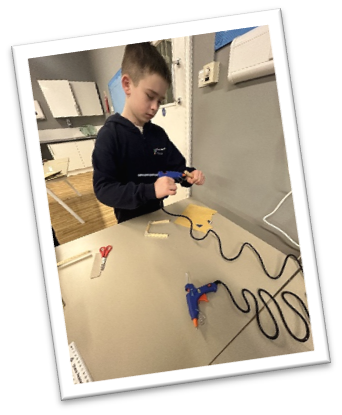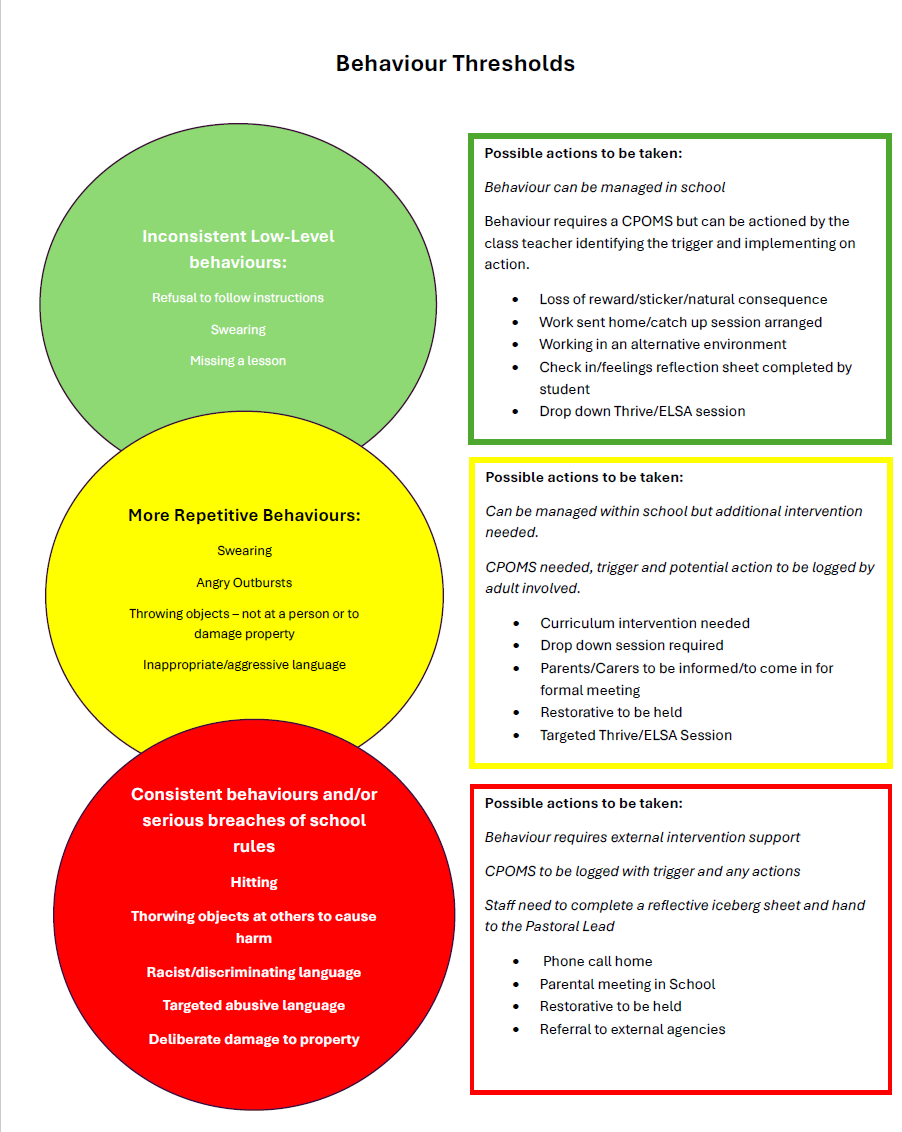Behavior Approach
Northcroft will provide clear behaviour guidelines to students and parents, with regards the schools’ expectations. The school sets high standards of behaviour from students both in and out of school.
The following is a code of conduct for students:
School code of conduct:
- Be Safe
- Belong
- Be Inspired
Every student will be expected to follow the classroom expectations as set out below: 
1) Be Safe
- To be respectful to ourselves.
- To be respectful towards others.
- To respect our learning environment.
2) Belong
- To be in the right place.
- To be in the right place at the right time.
- To complete the task set.
3) Be Inspired
- To be part of the learning.
- To work kindly with others.
Our Restorative Approach
Implementation of restorative approaches in response to unwanted, distressed or challenging behaviours:
-
Restorative Enquiry:
- Starting point for all restorative processes.
- Involves active, non-judgmental listening.
- Can be used with one person to help them reflect on a situa
 tion and find solutions.
tion and find solutions. - Useful before and during face-to-face meetings.
-
Restorative Discussion:
- Used in challenging situations, often between a more and less powerful person.
- Skills include expressing and listening for feelings and needs.
- Aims to understand why each person has acted the way they have.
-
Mediation:
- Useful when both parties (X and Y) believe the other person is the cause of the problem.
- The mediator remains impartial.
- Helps both sides consider the problem as a shared issue requiring a joint solution.
-
Victim/Wrongdoer Mediation:
- Useful when someone acknowledges causing harm to another person.
- Both sides agree to find ways to put things right.
- An impartial mediator assists in the process.
-
Restorative Conference:
- Involves those who caused harm meeting with those they harmed.
- Seeks to understand each other’s perspective.
- Aims to reach a mutual agreement to repair the harm.
- Supporters (usually affected individuals) participate and share their perspectives.
